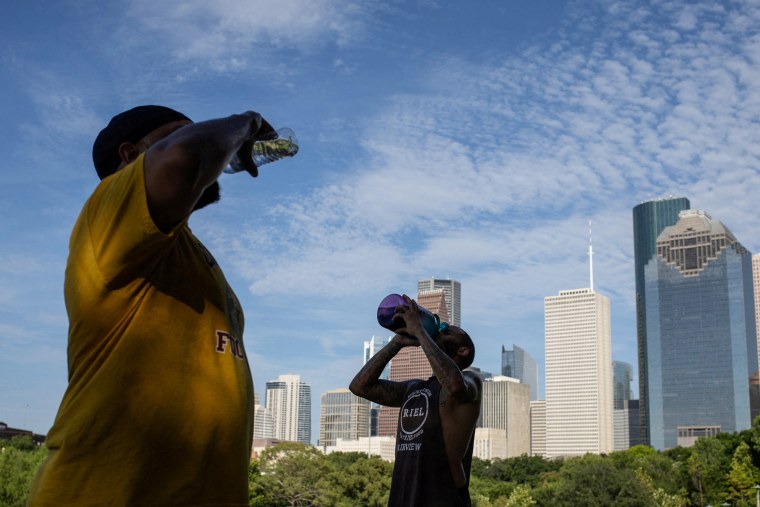About 41 million people in the U.S. live in urban heat islands, where city topography elevates temperatures by at least 8 degrees Fahrenheit, according to an analysis published Wednesday by Climate Central, a nonprofit research group.
Urban heat islands occur when cities replace land cover such as forest, open water and greenery with buildings, pavement and other materials that absorb and retain heat. While the heat effect is most noticeable during summertime, urban heat islands are warmer all year-round.
The Climate Central analysis covers 44 cities and highlights how certain populations are affected more acutely by global warming, in which global surface temperatures have risen at rates unprecedented in 2,000 years, according to the United Nations Intergovernmental Panel on Climate Change.
“We’re basically talking about a phenomenon where there’s a measurable increase in urban air temperatures that’s caused by the way the city is built,” said Kaitlyn Trudeau, a climate scientist with Climate Central. “It’s additional warming that is caused by dark building materials, dark pavement, building heights, population density and lack of green space.”
The report comes as a separate group of climate scientists said Tuesday that the heat waves simultaneously baking parts of the U.S. and Europe were “virtually impossible” if not for climate change.
The analysis relies on a database that classifies census tracts into 16 different land types. A city census tract can be dominated by compact high-rise buildings, large low-rise buildings, dense trees or a combination of several land types.
Different land types correspond to changes in temperatures, according to a methodology developed by researchers in 2020. Using this method, Climate Central researchers were able to calculate temperature increases for different cities, said Jen Brady, a researcher with the nonprofit.
Climate Central researchers found that nine major cities — New York, Houston, Los Angeles, Dallas, Chicago, San Antonio, San Diego, Phoenix and Detroit — each housed at least 1 million people currently affected by the urban heat island effect.
In New York City, the group reported that almost 80% of the population experiences temperatures at least 8 F warmer than a nonurban environment, followed by Houston, where 73% of city residents live in such urban heat islands.
Some smaller areas in each city see even higher temperatures. In Miami, 2% of the city’s population experiences temperatures 12 F warmer than nonurban areas.
Experts studying urban heat islands say the issue has important implications for both health and equity. Higher temperatures for people living in urban areas means a greater risk of exacerbating medical conditions and even heat-related deaths, said Jeffrey Schlegelmilch, the director of the National Center for Disaster Preparedness at Columbia Climate School.
“The urban heat island effect tends to impact poorer neighborhoods, majority-minority neighborhoods,” Schlegelmilch said. “The areas that tend to get hotter don’t have the resources to invest in well-insulated housing or tree cover. They’re more vulnerable to the effects of climate change.”
Evan Mallen, a senior analyst for the Georgia Institute of Technology’s Urban Climate Lab, said the Climate Central analysis is an important launchpad for sparking more research on urban heat islands, though more work needs to be done to understand how to address the issue.
Trudeau said some potential solutions include planting more green spaces in cities, painting city roofs and buildings white to help reflect heat, and using alternative cooling materials for pavement and sidewalks — even small actions, like planting trees locally, help cool cities down.
